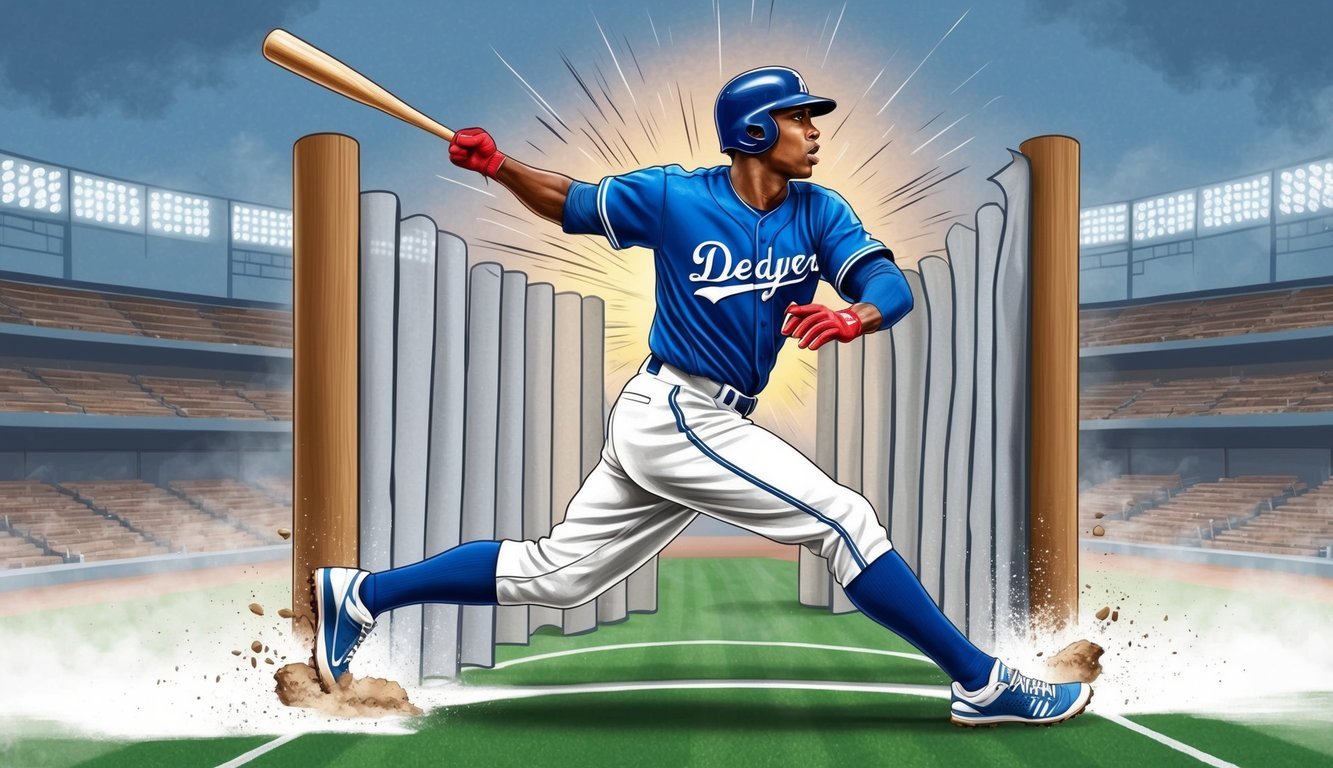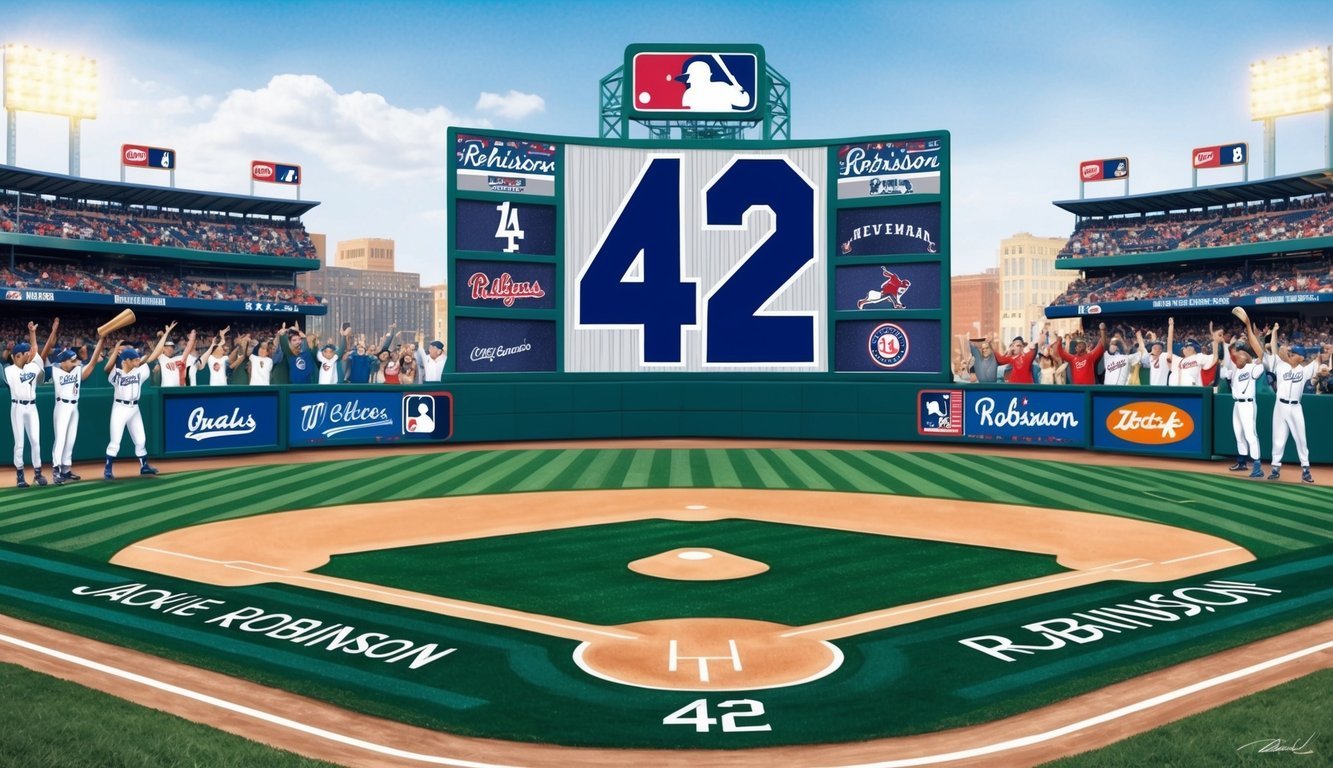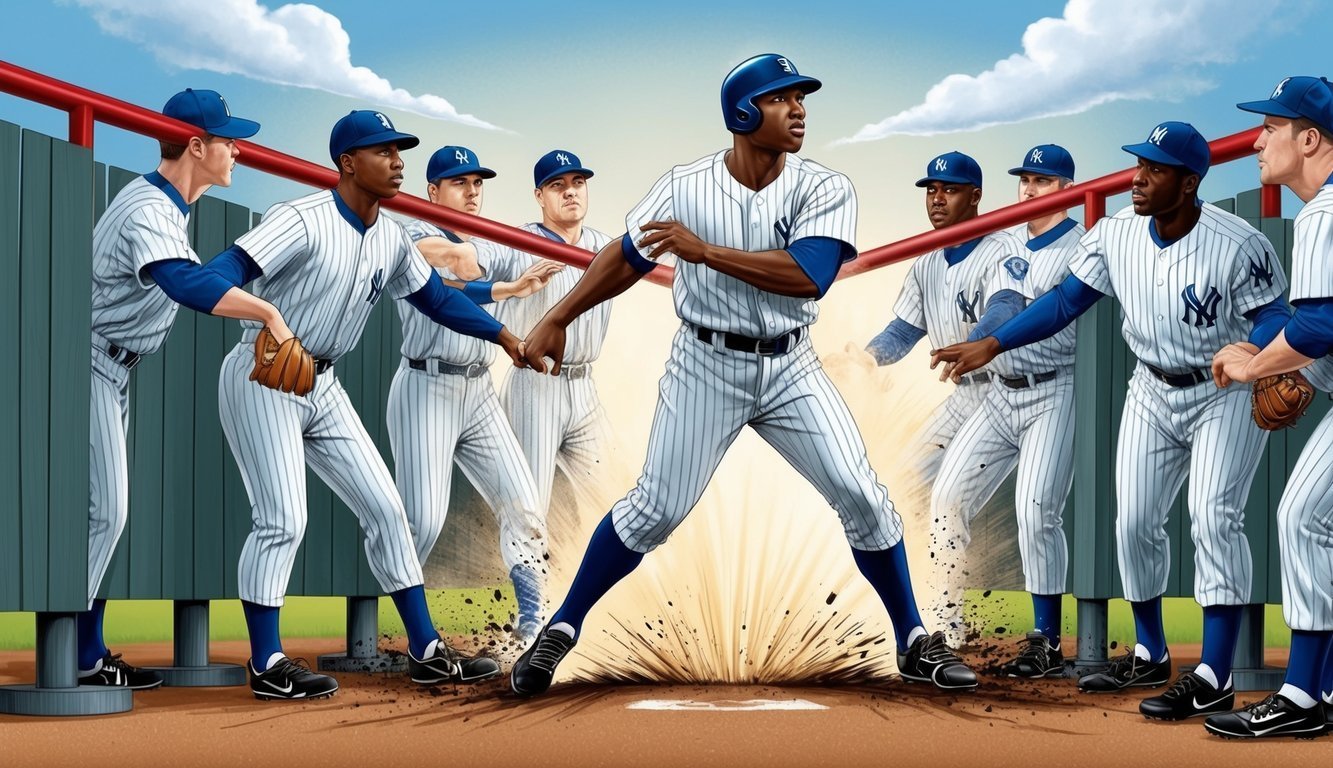Jackie Robinson made his debut with the Brooklyn Dodgers on April 15, 1947.
His arrival shattered baseball’s color barrier and changed America’s pastime forever.
As the first African American to play in Major League Baseball in the modern era, Robinson faced intense discrimination and hostility both on and off the field. His courage and skill paved the way for integration in baseball and helped advance the civil rights movement in the United States.
Robinson’s debut was the result of years of effort to desegregate professional baseball.
Branch Rickey, the Dodgers’ general manager, had carefully scouted Robinson and believed he had the character and talent to succeed despite the challenges he would face.
Robinson’s success opened doors for other Black players and transformed the sport.
The integration of Major League Baseball had impacts far beyond the diamond.
It challenged racial prejudices and provided a powerful symbol of progress in American society.
Robinson’s ability to excel under tremendous pressure inspired many and helped set the stage for further civil rights advances in the 1950s and 1960s.
His legacy continues to be celebrated in baseball and beyond.
Early Life and Background
Jackie Robinson’s journey to becoming a baseball pioneer began long before he stepped onto a Major League field.
His early experiences shaped the man who would break baseball’s color barrier.
Family Roots and Education
Jack Roosevelt Robinson was born on January 31, 1919, in Cairo, Georgia.
He was the youngest of five children in a family of sharecroppers.
His mother, Mallie Robinson, moved the family to Pasadena, California in 1920, seeking better opportunities.
Jackie excelled in sports from a young age.
At John Muir High School, he lettered in four sports: football, basketball, track, and baseball.
His athletic prowess earned him a spot at Pasadena Junior College, where he continued to shine.
Sports Career at UCLA
Robinson transferred to UCLA in 1939.
He became the first athlete in school history to letter in four sports: baseball, basketball, football, and track.
His versatility was remarkable:
- Baseball: Led the Pacific Coast Conference in batting with a .404 average
- Basketball: Led the Southern Division of the Pacific Coast Conference in scoring
- Football: Led the nation in punt return average in 1939 and 1940
- Track: Won the NCAA broad jump championship in 1940
Military Service and Court Martial
In 1942, Robinson was drafted into the Army.
He attended Officer Candidate School at Fort Hood, Texas, and was commissioned as a second lieutenant in 1943.
However, his military career was marred by racial discrimination.
On July 6, 1944, Robinson refused to move to the back of an Army bus.
This led to a court-martial.
He was acquitted of all charges and received an honorable discharge in November 1944.
This incident foreshadowed the courage he would later display in Major League Baseball.
Breaking the Color Barrier
Jackie Robinson’s historic debut in Major League Baseball on April 15, 1947 marked a pivotal moment in the sport’s integration.
This groundbreaking event faced numerous challenges and sparked varied reactions across the baseball world.
Jackie Robinson’s Debut and Early Struggles
Jackie Robinson stepped onto Ebbets Field as a Brooklyn Dodger, becoming the first African American to play in the modern Major Leagues.
He faced intense scrutiny and discrimination from fans, opponents, and even some teammates.
Robinson endured racial slurs, death threats, and intentional spiking by other players.
Despite these obstacles, he maintained his composure and let his performance speak for itself.
In his first season, Robinson hit .297, scored 125 runs, and helped the Dodgers win the National League pennant.
His success on the field began to change attitudes and pave the way for other Black players to enter the league.
Branch Rickey’s Role and the ‘Great Experiment’
Branch Rickey, the Brooklyn Dodgers’ general manager, was the architect behind baseball’s integration.
He called it his “Great Experiment” and carefully selected Robinson for the challenging task.
Rickey sought a player with not only exceptional talent but also the strength of character to withstand the inevitable backlash.
He famously told Robinson, “I’m looking for a ballplayer with guts enough not to fight back.”
The duo’s partnership extended beyond the baseball diamond.
Rickey provided guidance and support to Robinson, helping him navigate the complex racial landscape of 1940s America.
Reactions from Teams and Players
The integration of Major League Baseball met with mixed reactions.
Some teams, like the Philadelphia Phillies, were openly hostile.
Their manager, Ben Chapman, hurled racial insults at Robinson during games.
Other players, however, showed support.
Dodgers teammate Pee Wee Reese famously put his arm around Robinson during a game, silencing a heckling crowd.
As Robinson proved his worth, more teams began signing players from the Negro Leagues.
Larry Doby joined the Cleveland Indians just months after Robinson’s debut, becoming the first Black player in the American League.
By the end of the 1947 season, public opinion had shifted.
Robinson’s talent and dignity in the face of adversity won over many fans and fellow players, accelerating the integration of America’s pastime.
Jackie Robinson’s Impact on Baseball

Jackie Robinson’s integration into Major League Baseball in 1947 forever changed the sport.
His exceptional skills and unwavering courage paved the way for other African American players and helped transform baseball into a more inclusive game.
Performance and Milestones
Robinson’s debut with the Brooklyn Dodgers on April 15, 1947, broke the color barrier in MLB.
He quickly proved his worth on the field, winning the inaugural Rookie of the Year award that season.
Robinson’s batting average of .311 and 12 home runs in 1947 silenced critics who doubted his abilities.
He earned six consecutive All-Star selections from 1949 to 1954, showcasing his consistent excellence.
In 1949, Robinson won the National League MVP award, batting .342 with 124 RBIs.
His stellar performance helped the Dodgers reach the World Series six times, winning the championship in 1955.
Influence on Future African American Players
Robinson’s success opened doors for other talented African American players.
Larry Doby integrated the American League just months after Robinson’s debut.
Willie Mays, who entered the league in 1951, cited Robinson as an inspiration.
Many future Hall of Famers, including Hank Aaron and Frank Robinson, followed in Jackie’s footsteps.
Robinson’s impact extended beyond his playing career.
He became a vocal advocate for civil rights and continued to push for greater integration in baseball’s coaching and management roles.
His legacy is celebrated annually on April 15, when all MLB players wear his retired number 42.
Robinson’s influence on baseball and society earned him a place in the Hall of Fame in 1962.
Beyond the Field

Jackie Robinson’s impact extended far beyond baseball diamonds. His courage and determination paved the way for broader societal changes and inspired generations of African Americans.
Activism and Contribution to Civil Rights
Robinson used his fame to advocate for racial equality.
He spoke at civil rights rallies and wrote newspaper columns addressing racial issues.
In 1956, he joined the NAACP as chair of the Freedom Fund Drive, helping raise money for the organization’s initiatives.
Robinson testified before Congress about discrimination in the military.
He also supported Martin Luther King Jr.’s efforts, participating in the 1963 March on Washington.
His activism sometimes drew criticism from both white and Black Americans, but Robinson remained committed to fighting injustice.
Life After Baseball
After retiring in 1957, Robinson pursued business ventures.
He became the first Black vice president of a major American corporation when he joined Chock full o’Nuts coffee company.
He also helped establish the Freedom National Bank in Harlem to support Black-owned businesses.
Robinson briefly worked as a baseball analyst for ABC.
In 1972, he threw out the first pitch at the World Series, pushing MLB to hire more Black managers.
Sadly, he passed away just days later at age 53.
His legacy lives on through the Jackie Robinson Foundation, which provides scholarships and leadership training to minority students.
MLB continues to honor him by retiring his number 42 league-wide and celebrating Jackie Robinson Day each April 15.
Legacy and Commemoration

Jackie Robinson’s impact on baseball and society extends far beyond his playing career.
He broke the color barrier, paving the way for future generations of African American players in Major League Baseball.
In 1997, MLB took the unprecedented step of retiring Robinson’s Number 42 across all teams.
This honor ensures his jersey number will never be worn again by any player, except on special occasions.
This decision not only commemorates Robinson’s significant impact on the game but also serves as a reminder of his legacy in breaking the color barrier in Major League Baseball.
Throughout his career, Jackie Robinson’s contributions were undeniable, as reflected in his remarkable achievements and statistics.
For those interested in understanding the full scope of his impact, the jackie robinson career statistics highlight his exceptional performance and the barriers he overcame to change the sport forever.
The National Baseball Hall of Fame inducted Robinson in 1962, recognizing his contributions both on and off the field.
His plaque in Cooperstown serves as a permanent tribute to his groundbreaking achievements.
Since 2004, MLB has celebrated Jackie Robinson Day on April 15th each year.
On this day, all players, coaches, and umpires wear Number 42 to honor Robinson’s legacy.
Many ballparks feature statues or plaques commemorating Robinson’s impact.
These serve as reminders of his bravery and the progress made in baseball integration.
Robinson’s legacy lives on through various educational initiatives and scholarships bearing his name.
These programs aim to inspire future generations and promote diversity in sports and society.
Even after his death in 1972, Robinson’s influence continues to grow.
Books, films, and documentaries regularly explore his life story, ensuring his legacy endures for years to come.
